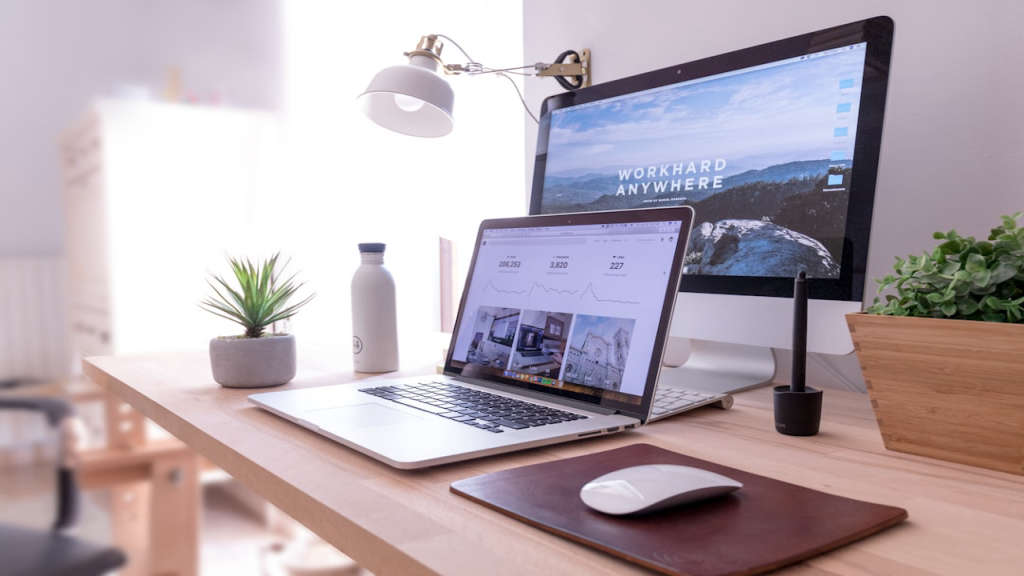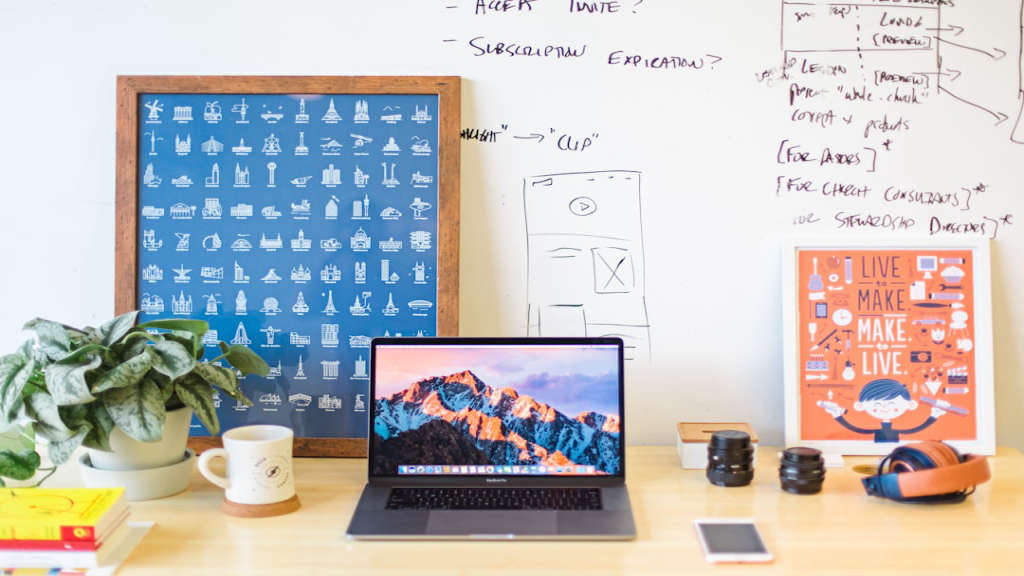
Are you a freelance graphic designer looking to take your career to the next level? In today’s competitive landscape, it’s important to stay ahead of the curve and continually improve your skills. In this blog post, we will share 10 game-changing tips for freelance graphic design success that will help you stand out from the crowd and attract more clients.
Main Points
- Freelance Graphic Design Tips – Implementing these tips will help you stay relevant in the ever-evolving world of graphic design.
- 2024 Graphic Design Trends – Keeping an eye on upcoming trends will give you a competitive edge in the industry.
- Top Graphic Design Trends 2024 – Understanding and incorporating the top trends of 2024 will help you create modern and visually appealing designs.
- Future of Graphic Design 2024 – Anticipating the future of graphic design will allow you to adapt and innovate in your work.

Mastering Time Management as a Freelance Graphic Designer
As a freelance graphic designer, time management is crucial for your success. With multiple projects, deadlines, and clients to juggle, it’s easy to feel overwhelmed. However, by implementing effective time management strategies, you can maximize your productivity and creativity. Here are some tips to help you master time management as a freelance graphic designer:
1. Set Clear Goals and Prioritize Tasks
Start each day by setting clear goals for what you want to accomplish. Prioritize tasks based on their importance and deadlines. Breaking down your goals into smaller tasks can help you stay focused and organized throughout the day.
2. Use Time-Tracking Tools
Utilize time-tracking tools to monitor how you are spending your time. This can help you identify patterns, eliminate distractions, and optimize your workflow. By tracking your time, you can better estimate how long tasks will take and allocate your time accordingly.
3. Create a Schedule and Stick to It
Develop a scheduling system that works for you. Whether you prefer a digital calendar or a traditional planner, having a schedule can help you stay organized and on track. Allocate specific time blocks for different tasks and projects to avoid multitasking and improve focus.
4. Take Breaks and Rest
While it may seem counterintuitive, taking breaks and allowing yourself to rest is essential for maintaining productivity and creativity. Regular breaks can help you recharge and prevent burnout. Listen to your body and mind, and don’t be afraid to step away from your work when needed.
5. Learn to Say No
As a freelancer, it’s easy to take on too much work to please clients or to fear missing out on opportunities. However, saying no to projects that don’t align with your goals or values is necessary for your time management and overall well-being. Focus on quality over quantity and prioritize projects that will help you grow professionally.
- Set clear goals and prioritize tasks
- Use time-tracking tools
- Create a schedule and stick to it
- Take breaks and rest
- Learn to say no
By implementing these time management strategies and prioritizing your goals, you can master time management as a freelance graphic designer and achieve success in your career.

Building a Strong Online Portfolio to Showcase Your Work
Having a strong online portfolio is essential in showcasing your talent and skills to a wider audience. Whether you are a freelance designer, photographer, writer, or any other creative professional, a well-curated online portfolio can make a significant difference in your career. Here are some key tips to help you build a compelling online portfolio that will impress potential clients and employers:
1. Selecting the Right Platform
When building your online portfolio, it is important to choose the right platform that suits your needs. There are many website builders and portfolio platforms available, such as Wix, Squarespace, or Behance. Consider your budget, design preferences, and ease of use when selecting the platform for your portfolio.
2. Showcasing Your Best Work
Highlighting your best work is crucial in creating a strong online portfolio. Select a diverse range of projects that demonstrate your skills and expertise. Include high-quality images, descriptions, and client feedback to provide a comprehensive overview of your work.
3. Crafting a Compelling About Me Section
Your “About Me” section is your opportunity to introduce yourself to potential clients and employers. Use this section to tell your story, showcase your personality, and highlight your unique selling points. Be authentic and engaging to make a lasting impression on your audience.
| Key Takeaways |
|---|
| 1. Select the right platform for your online portfolio. |
| 2. Showcase your best work with high-quality images and descriptions. |
| 3. Craft a compelling “About Me” section that highlights your unique selling points. |
By following these key tips and putting in the effort to create a strong online portfolio, you can effectively showcase your work and attract new opportunities in your chosen field. Remember to regularly update your portfolio with fresh content and continue to refine your presentation to stay ahead in a competitive market.

Developing Strong Communication Skills with Clients
Building strong communication skills is crucial for establishing and maintaining successful relationships with clients. Effective communication not only helps in understanding their needs and expectations, but also in conveying your ideas and solutions clearly. Here are some tips to help you improve your communication skills with clients:
Active Listening
One of the key elements of effective communication is active listening. Make sure to fully concentrate on what the client is saying, ask clarifying questions, and show that you are engaged and interested in their thoughts. This helps in building trust and rapport with the client.
Empathy
Showing empathy towards your clients is another important aspect of communication. Try to understand their perspective, emotions, and needs. This will not only help you in providing better solutions but also in creating a strong bond with the client.
Clarity and Conciseness
Clearly and concisely conveying your thoughts and ideas is crucial in client communication. Avoid jargon, use simple language, and structure your messages in a coherent manner. This will ensure that the client understands your point of view and the solutions you are proposing.
By actively listening, showing empathy, and communicating clearly, you can develop strong communication skills with your clients. Remember, effective communication is the key to successful client relationships.
Setting Clear Boundaries to Maintain Work-Life Balance
Work-life balance is essential for overall well-being and productivity. In today’s fast-paced world, it can be challenging to disconnect from work and focus on personal life. Setting clear boundaries is crucial to strike a balance between work responsibilities and personal time. Here are some tips to help you maintain a healthy work-life balance:
1. Establish a Routine
Creating a consistent daily routine can help you allocate time for work, family, and self-care. Set specific work hours and stick to them to avoid working overtime. Make time for hobbies, exercise, and relaxation to recharge and stay productive.
2. Define Work Hours
Clearly define your work hours and communicate them to your colleagues and clients. Let them know when you are available and when you need personal time. Avoid checking work emails or taking work calls outside of your designated work hours to prevent burnout.
3. Create a Dedicated Workspace
Set up a designated workspace at home or in the office where you can focus on work without distractions. Keep this area separate from your personal space to maintain a boundary between work and home life. Having a specific work area can help you stay organized and focused.
4. Limit Technology Use
Avoid using electronic devices for work-related tasks during personal time. Set boundaries for technology use, such as turning off work notifications after hours and avoiding work-related social media browsing. Disconnecting from technology can help you unwind and enjoy quality time with loved ones.
5. Practice Mindfulness
Stay present and focused on the present moment by practicing mindfulness. Take breaks throughout the day to clear your mind, relax, and recharge. Mindfulness techniques such as deep breathing exercises and meditation can help reduce stress and improve overall well-being.
6. Prioritize Self-Care
Make self-care a priority by incorporating regular exercise, healthy eating, and quality sleep into your daily routine. Take time to relax, unwind, and engage in activities that bring you joy. Taking care of yourself is essential for maintaining a healthy work-life balance.
By setting clear boundaries and prioritizing self-care, you can achieve a healthy work-life balance and improve your overall well-being. Remember that it’s okay to say no to work demands and prioritize your personal life. Take control of your time and create a balance that works for you.
Continuous Learning and Skill Development in Graphic Design
Being a graphic designer is not just about creating visually appealing designs. It’s about constantly learning and developing your skills to stay ahead in this competitive field. Continuous learning is crucial for any designer who wants to succeed in the fast-paced world of graphic design.
One of the key aspects of continuous learning in graphic design is keeping up with the latest trends and technologies. Design trends are constantly evolving, and new tools and software are always being introduced. By staying up-to-date with these trends and technologies, designers can create innovative and cutting-edge designs that appeal to clients and audiences.
The Importance of Skill Development
Skills development is another essential component of being a successful graphic designer. It’s not enough to rely on the skills you learned in school or early in your career. As the field of graphic design changes, so too must your skill set. Adapting to new techniques and styles will ensure that you remain relevant and competitive in the industry.
One way to continually develop your skills is to take on challenging projects that push you out of your comfort zone. By tackling projects that require you to learn new techniques or software, you can expand your skill set and grow as a designer. Additionally, seeking feedback from peers and mentors can help you identify areas for improvement and further enhance your skills.
In conclusion, continuous learning and skill development are essential for graphic designers who want to succeed in this ever-changing field. By staying informed about the latest trends and technologies, as well as actively working to improve and expand your skill set, you can position yourself as a top-tier designer in the industry.
Understanding the Business Side of Freelancing
Freelancing is not just about doing what you love; it’s also about understanding the business side of it. Many freelancers overlook the importance of managing their finances, marketing their services, and building strong client relationships. To truly succeed as a freelancer, you need to treat your freelance career as a business. Here are some key aspects to consider:
Financial Management
One of the most crucial aspects of freelancing is managing your finances. This includes setting rates that cover your expenses and allow for growth, tracking your income and expenses, and planning for taxes. Without a solid financial foundation, your freelance business may struggle to survive in the long run.
Marketing Your Services
Marketing is essential for attracting new clients and growing your freelance business. This can include creating a professional website, leveraging social media platforms, networking with other professionals in your industry, and seeking out opportunities for exposure. By actively marketing your services, you can increase your visibility and attract more clients.
Building Client Relationships
Client relationships are the lifeblood of any freelance business. Building strong, long-lasting relationships with your clients can lead to repeat business, referrals, and positive word-of-mouth recommendations. It’s important to communicate effectively, meet deadlines, and provide high-quality work to maintain positive relationships with your clients.
“Success in freelancing requires a combination of talent, hard work, and a strong business mindset.”
In conclusion, freelancing is not just about the work you do; it’s about understanding the business side of it as well. By focusing on financial management, marketing your services, and building strong client relationships, you can set yourself up for success in the competitive world of freelancing.
Marketing Yourself Effectively as a Freelance Graphic Designer
Being a freelance graphic designer comes with its own set of challenges, one of which is effectively marketing yourself to potential clients. In a competitive industry, it’s crucial to stand out and showcase your skills in a way that attracts new opportunities. Here are some tips to help you market yourself effectively as a freelance graphic designer:
1. Build a Strong Online Presence
One of the most important aspects of marketing yourself as a freelance graphic designer is to have a strong online presence. Create a professional website that showcases your portfolio, skills, and past projects. Use social media platforms like Instagram, Behance, and LinkedIn to showcase your work and connect with potential clients. Utilize search engine optimization (SEO) techniques to make sure your website ranks well in online searches for graphic designers.
2. Network and Collaborate
Networking is key in any industry, and as a freelance graphic designer, it can open up new opportunities for projects and collaborations. Attend industry events, join online design communities, and reach out to other professionals in the field. Collaborating with other creatives can also help expand your portfolio and reach a wider audience.
3. Define Your Unique Selling Proposition
As a freelance graphic designer, it’s important to define what sets you apart from your competitors. Identify your unique selling proposition, whether it’s your design style, your niche expertise, or your exceptional customer service. Highlight this USP in all your marketing materials, including your website, social media profiles, and pitch emails.
4. Offer Value to Potential Clients
Instead of focusing solely on selling your services, focus on the value you can provide to potential clients. Show them how your designs can help solve their problems, improve their brand image, or attract more customers. Offer free resources, such as design tips, tutorials, or downloadable templates, to showcase your expertise and build trust with potential clients.
5. Ask for Referrals and Testimonials
Word-of-mouth marketing is incredibly powerful, especially in the creative industry. Encourage your satisfied clients to refer you to their network and provide testimonials that showcase your skills and professionalism. Display these testimonials prominently on your website and social media profiles to build credibility with potential clients.
By implementing these marketing strategies, you can effectively promote yourself as a freelance graphic designer and attract new clients to grow your business.
Conclusion
In conclusion, being a freelance graphic designer can be a rewarding career choice if you have the right skills and mindset. By following these freelance graphic design tips, you can enhance your portfolio, attract more clients, and ultimately grow your reputation in the industry. Remember to stay updated on the latest trends, maintain a strong online presence, and always deliver high-quality work to stand out from the competition. Good luck on your freelance graphic design journey!
Frequently Asked Questions
What software do graphic designers commonly use?
Graphic designers commonly use software such as Adobe Photoshop, Illustrator, and InDesign for their design work.
How can I improve my graphic design skills?
You can improve your graphic design skills by practicing regularly, learning new techniques, and seeking feedback from other designers.
What should be included in a graphic design portfolio?
A graphic design portfolio should include a variety of your best work, showcasing your skills in different styles and techniques.
How do I determine my rates as a freelance graphic designer?
You can determine your rates as a freelance graphic designer by considering factors such as your experience, skills, and the scope of the project.
What are some essential tips for managing client projects?
Some essential tips for managing client projects include setting clear expectations, establishing good communication, and delivering work on time and within budget.
